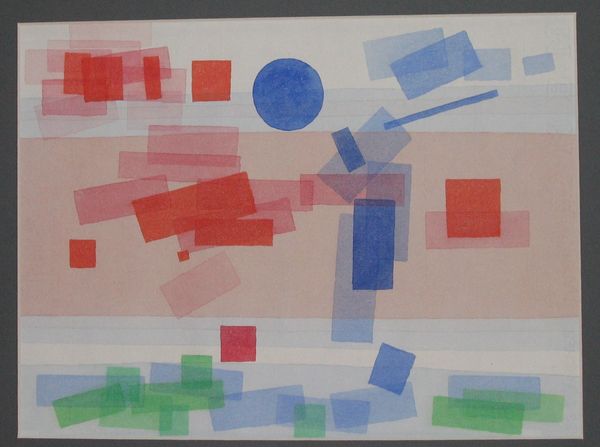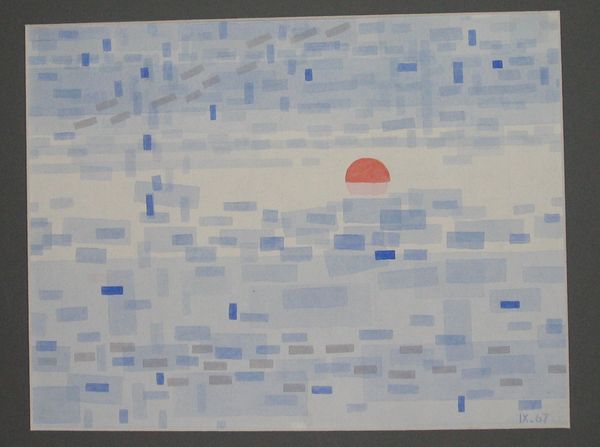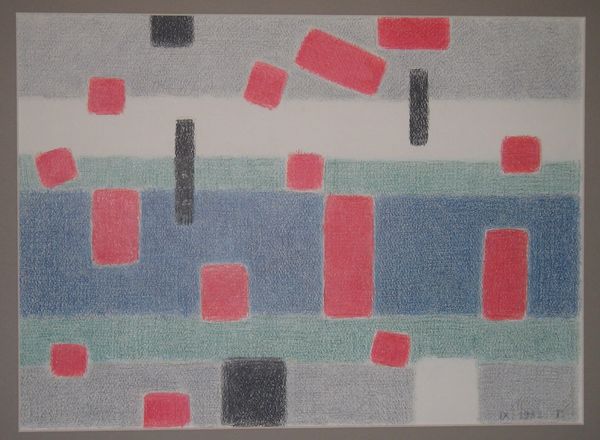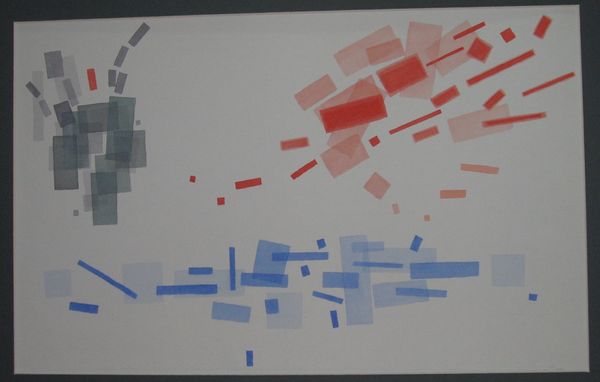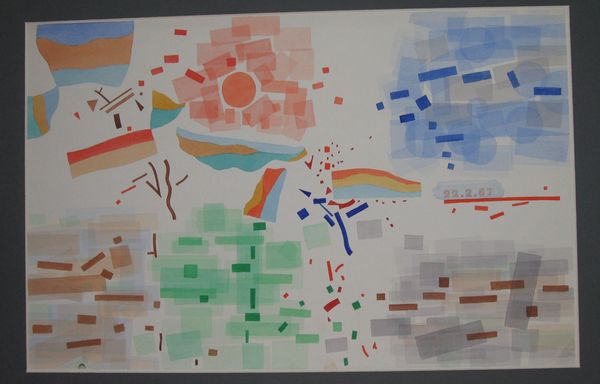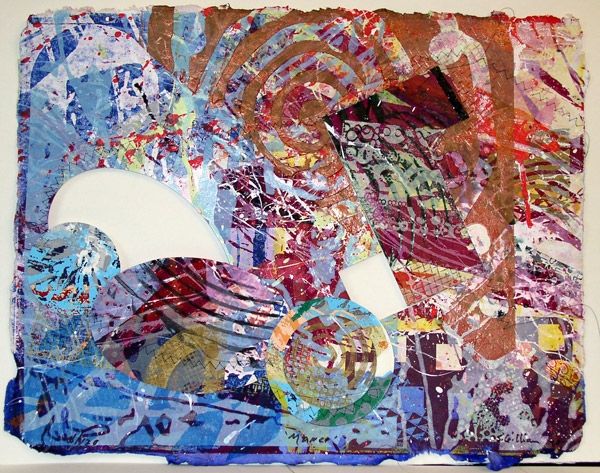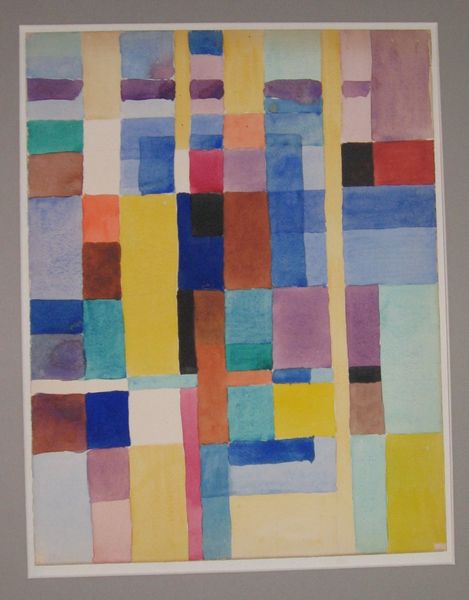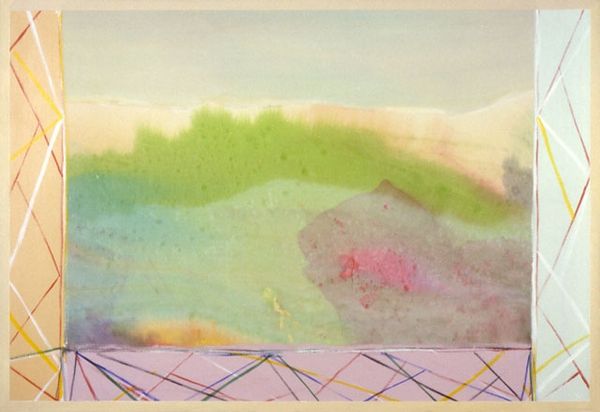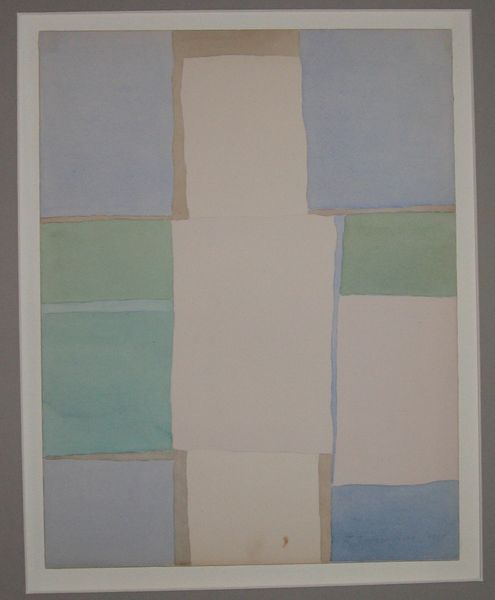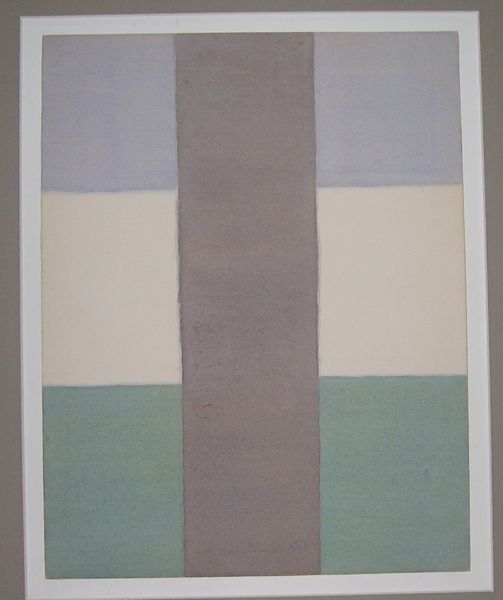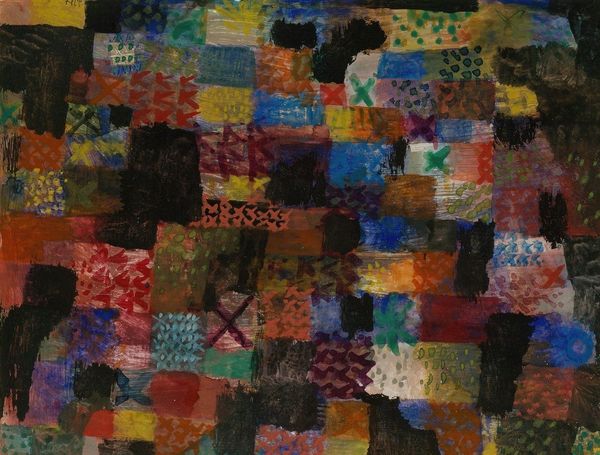
painting, textile, watercolor
#
painting
#
circle
#
textile
#
text
#
watercolor
#
rectangle
#
geometric
#
geometric-abstraction
#
abstraction
Copyright: Hryhorii Havrylenko,Fair Use
Curator: This is Hryhorii Havrylenko’s “Composition,” created in 1967. It's currently held in a private collection. Editor: It’s so gentle, almost like a watercolor dream. The arrangement of forms—the rectangles, the single circle—they float. Curator: The ethereal quality you're noting is directly related to Havrylenko’s unusual use of textiles as a base for watercolor painting. That blend is essential to its context. Think about Soviet material culture. Editor: Interesting. Ignoring the process for a moment, formally, it creates this layering effect; these overlapping geometric forms result in subtly different hues, constructing depth within an otherwise very flat space. The colors work well too. Curator: Consider the historical factors, though. Textile production in the Soviet Union often employed women, traditionally considered a 'craft' activity. The painting elevates and acknowledges their labor, challenging the definition of fine art versus applied art. It transforms an object of mass production into one of unique value. Editor: I see what you're suggesting. However, the composition itself relies on classic modernist ideas. The tension between geometric abstraction and pure color reminds me of Josef Albers or even Agnes Martin’s restrained compositions, yet retaining that gentle wash of colour due to his chosen medium. The interplay feels critical to this, as the shapes contrast to create both unity and tension. Curator: And let’s not forget the title “Composition” reinforces its connection to modernist aesthetics and theories in contrast to its manufacturing processes. The interplay of watercolor and the use of textiles, speaks directly to its place within the system of art production and societal labor norms in 1960s Soviet Ukraine. Editor: It’s interesting how these squares and rectangles are built up, a bit like architectural features. A bird's-eye view almost. Curator: That's fascinating. What looked initially like an unassuming composition on fabric actually becomes richer the more we consider its historical existence and the labour involved. Editor: And on the other hand, it can stand as a lesson in subtle geometry that has some wonderful tonal modulations that catch the eye as much as the idea does.
Comments
No comments
Be the first to comment and join the conversation on the ultimate creative platform.
